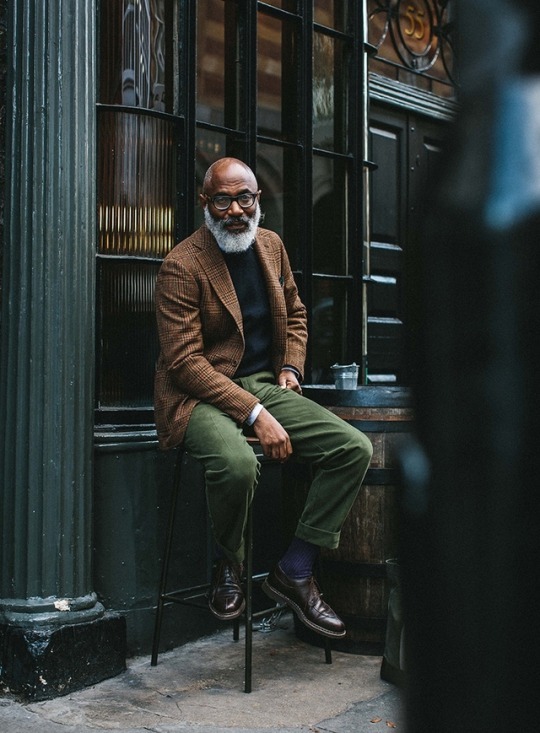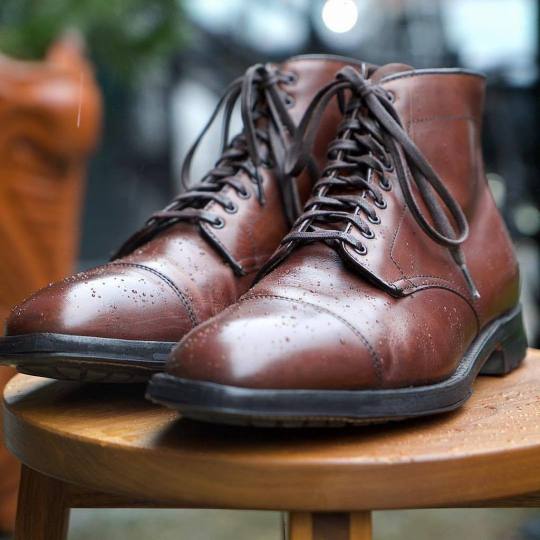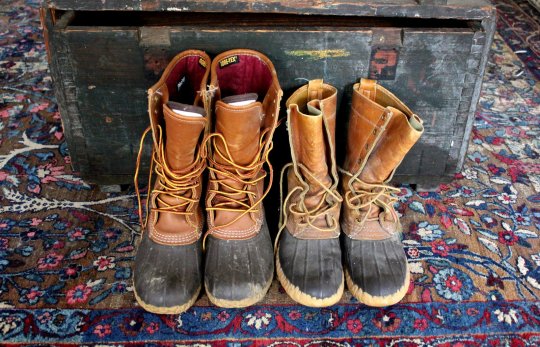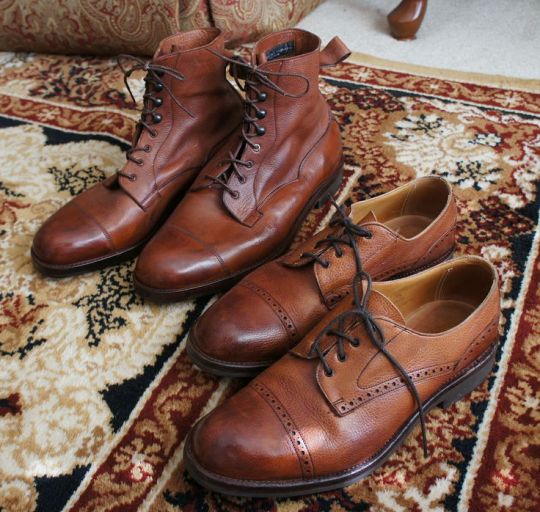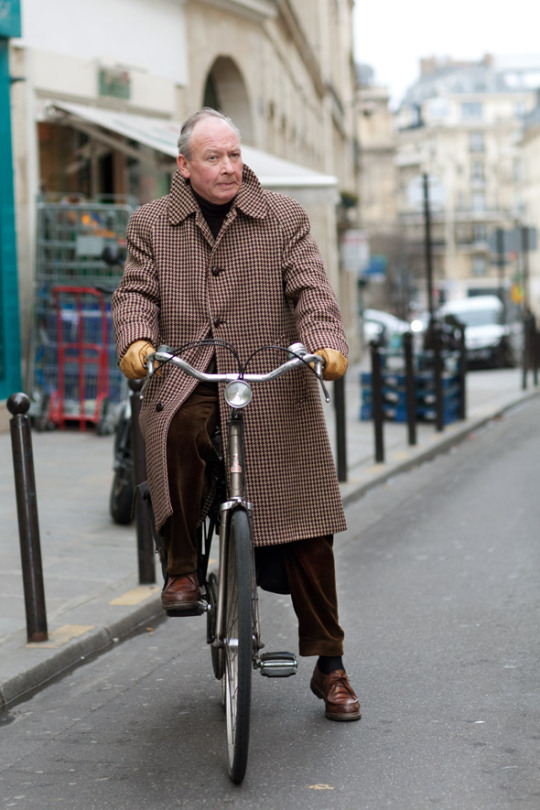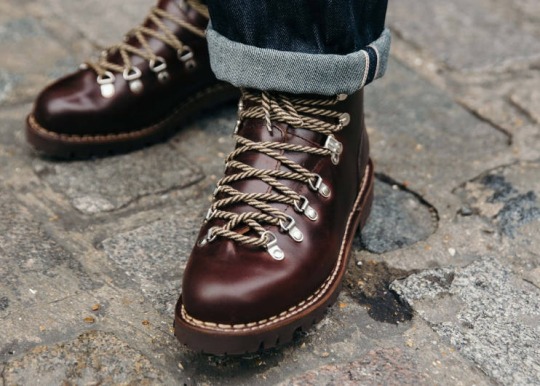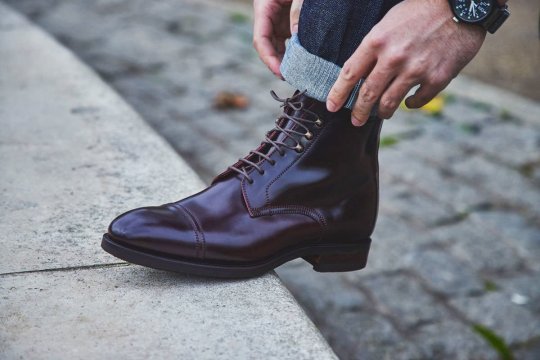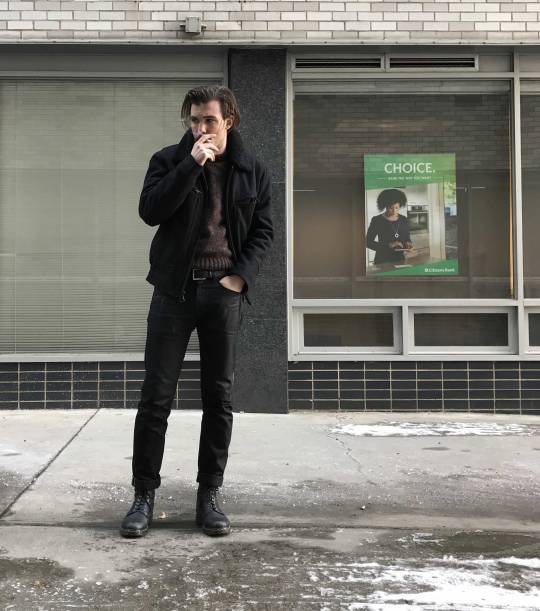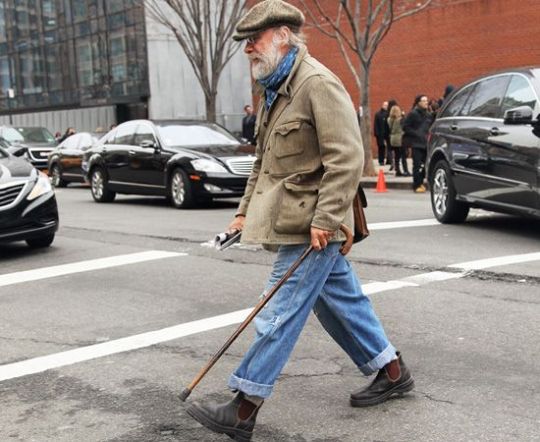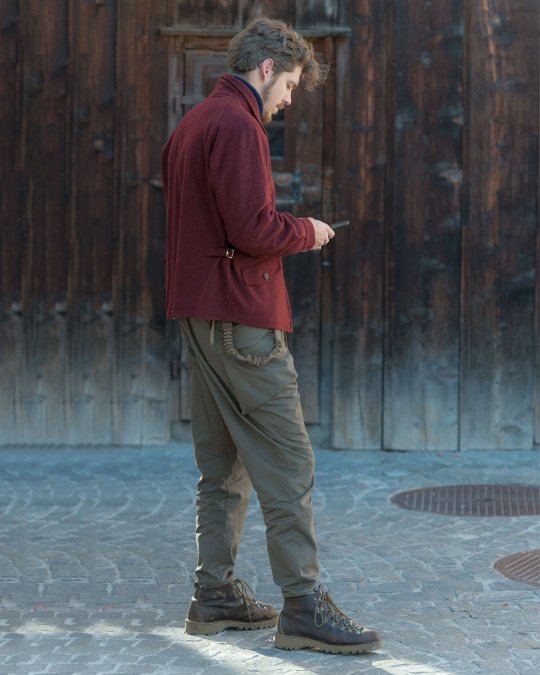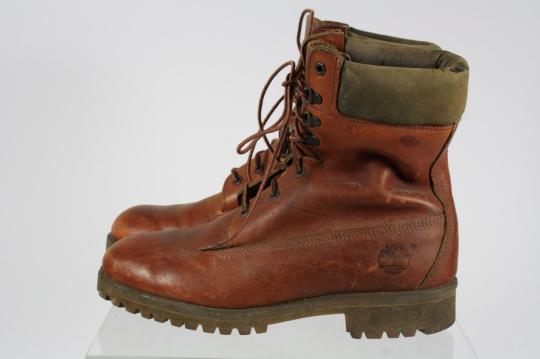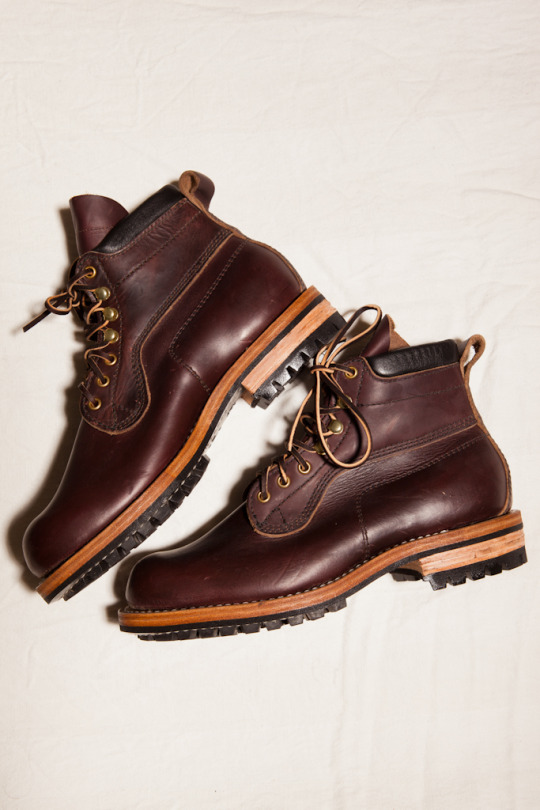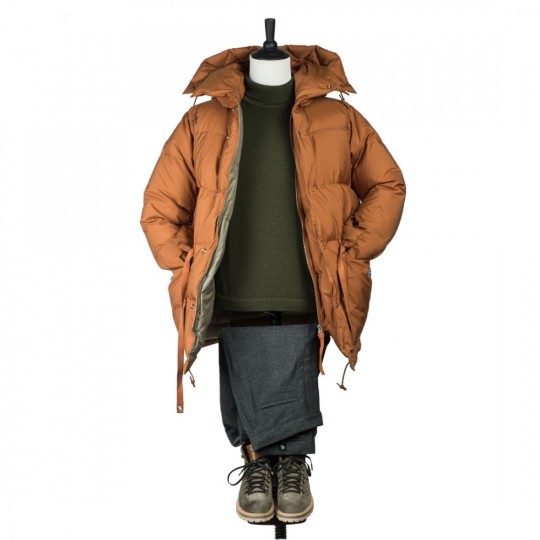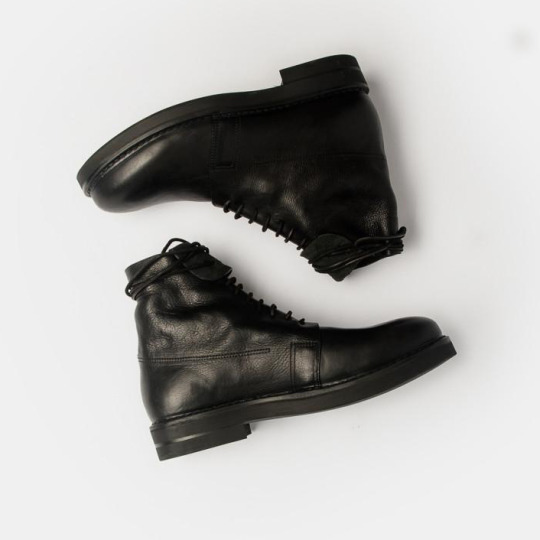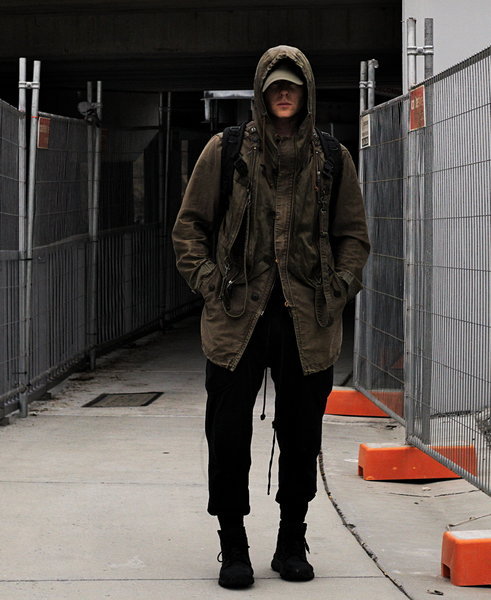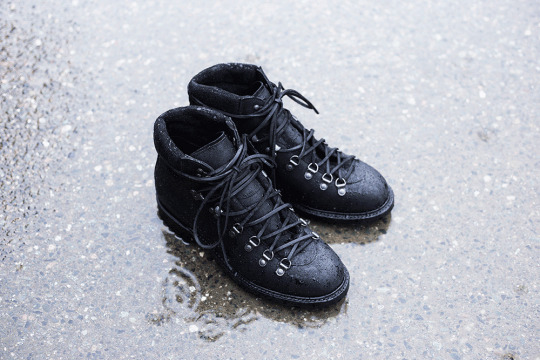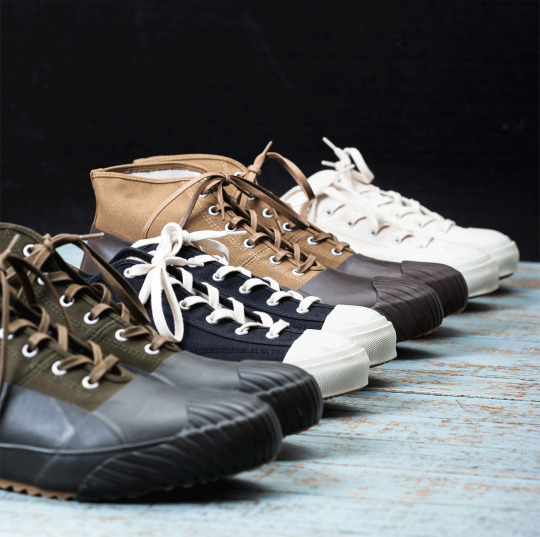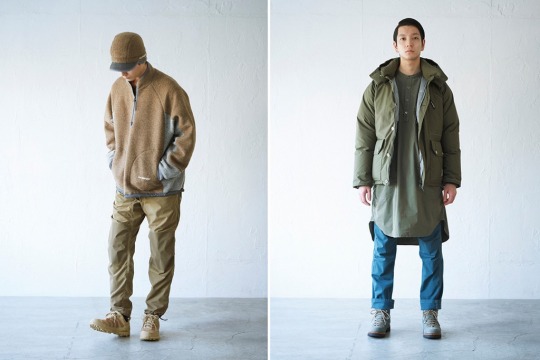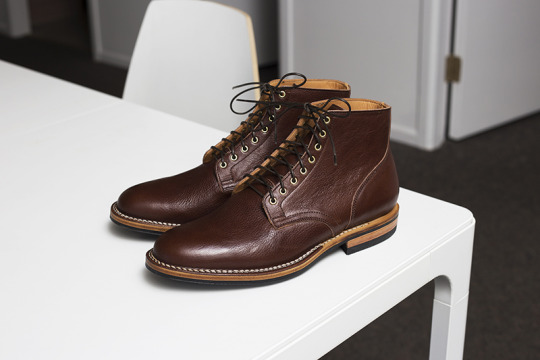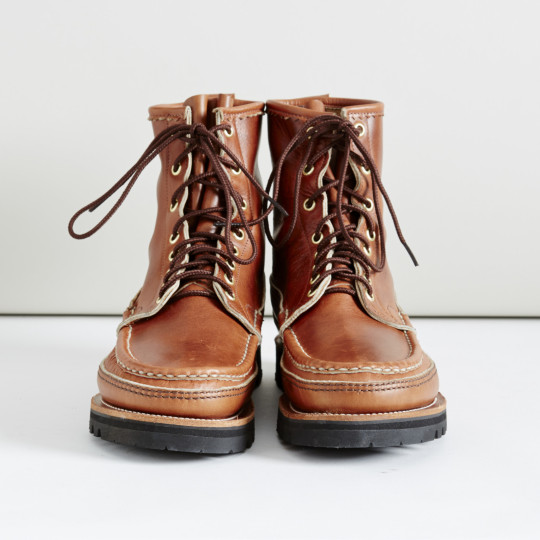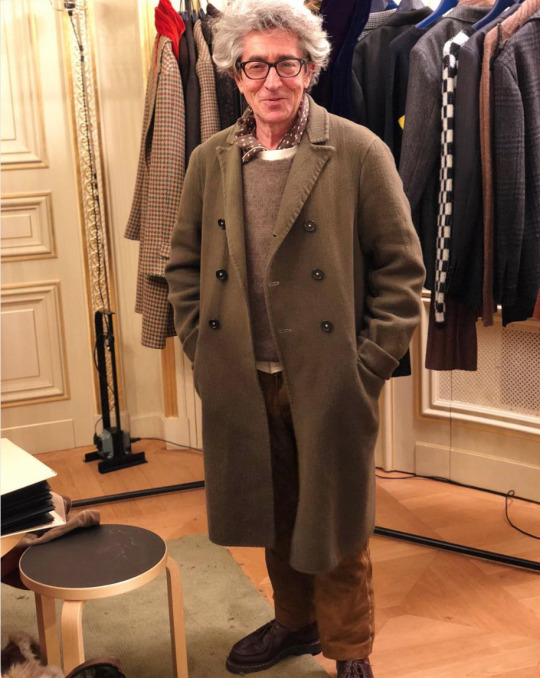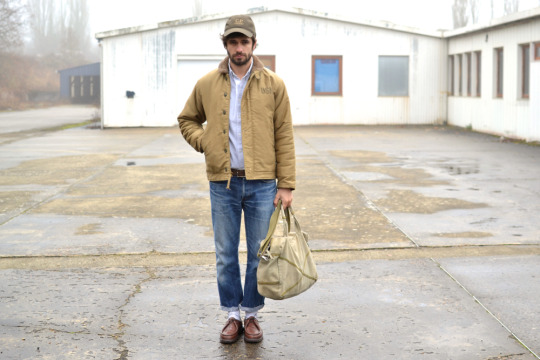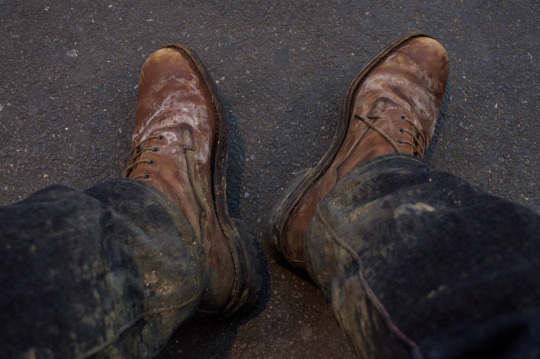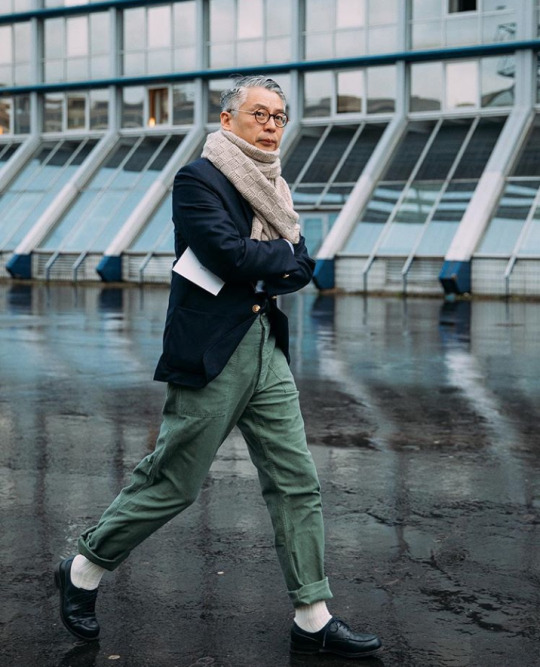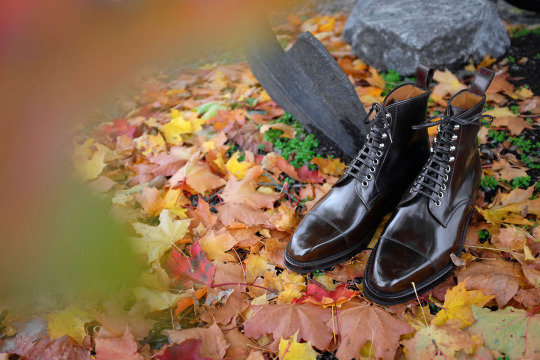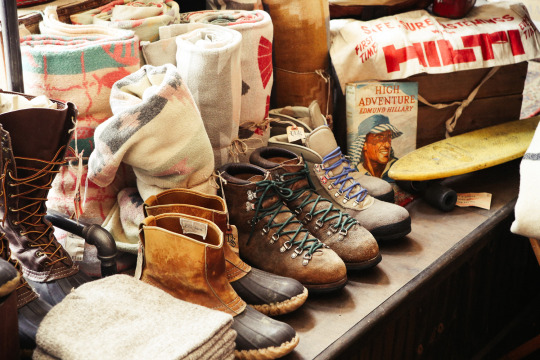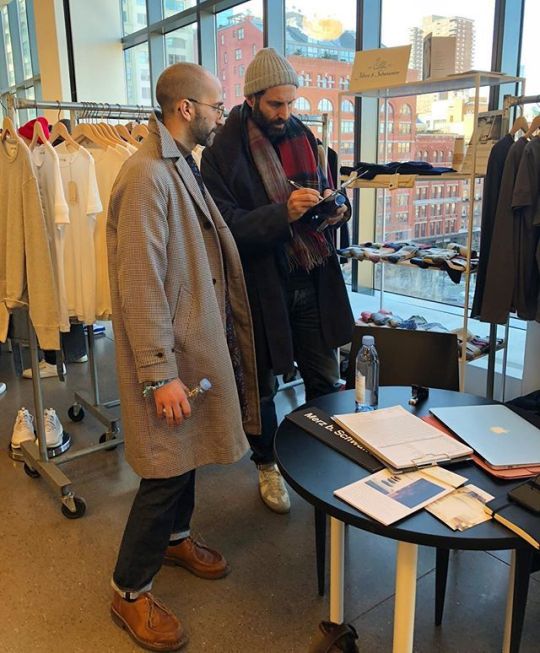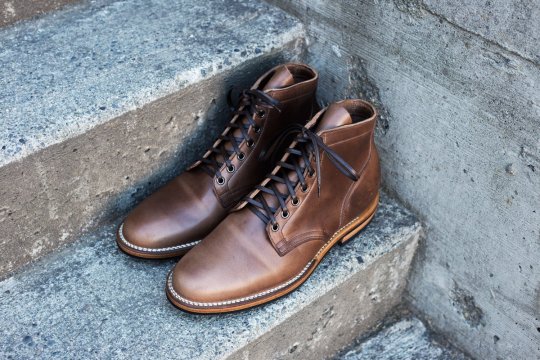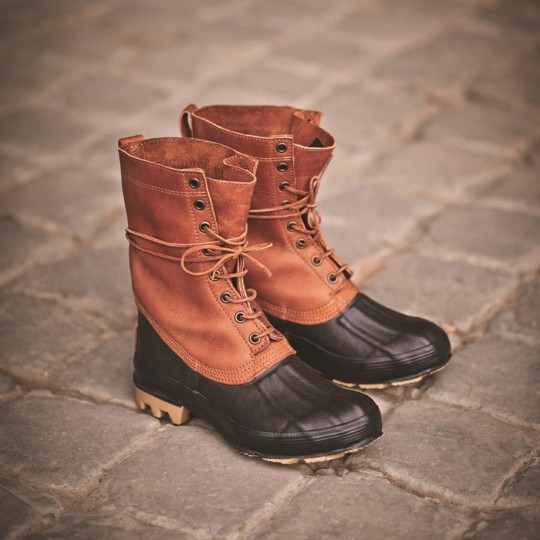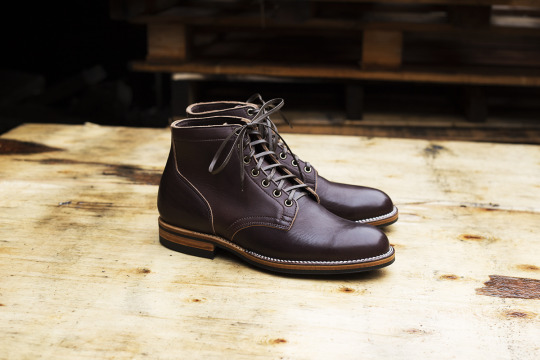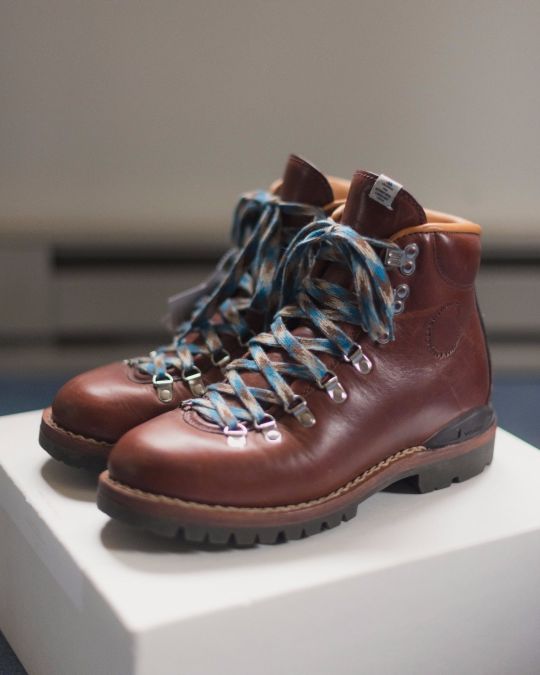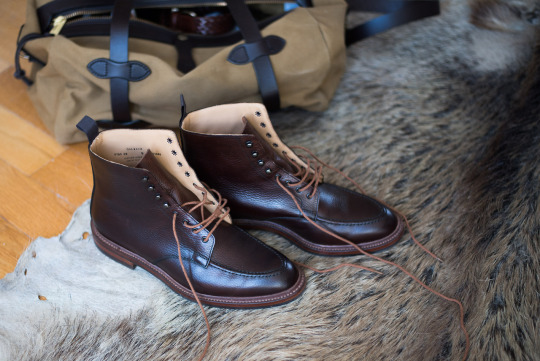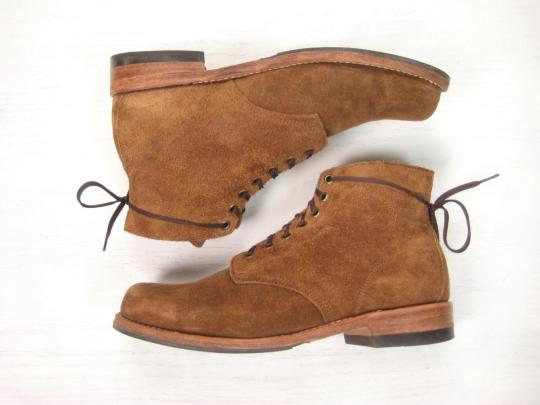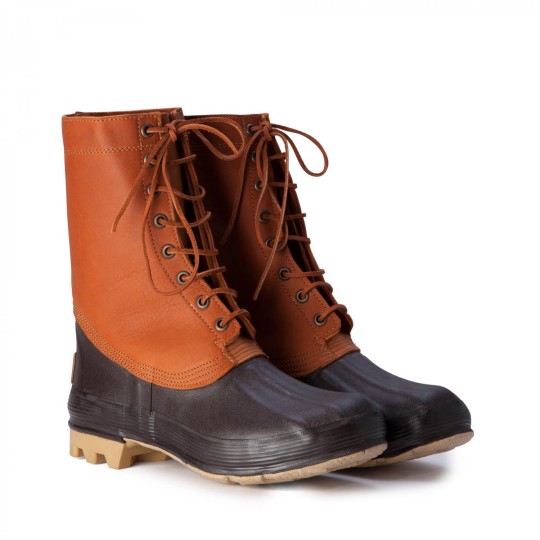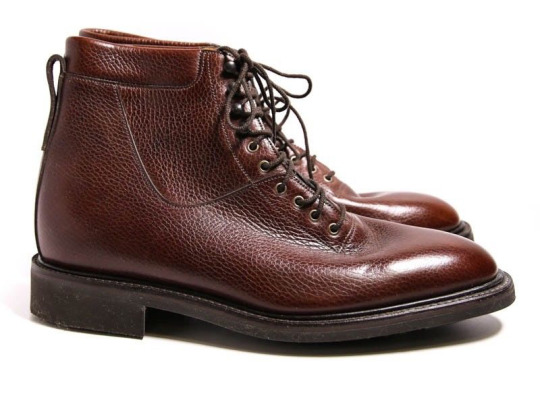
There’s a famous story about Sir Edmund Hillary and sherpa Tenzing Norgay’s boots, which they commissioned a year before their ascent up Mount Everest. Back in the 1950s, mountaineering boots were often cumbersome. Many were bulky and heavy, made of thick deerskin leather, and some even came up to the wearer’s thighs – not the kind of boots you’d want for the most challenging mountaineering expedition. So Hillary and Norgay approached SATRA, a British research and development center, about coming up with something that was lighter. As they knew then, a pound on your foot can feel like five pounds on your back. At least when you’re scaling a mountain.
The resulting boots were made using mostly natural materials and some of Britain’s oldest shoemaking techniques. They featured a reverse welt to keep the melting snow from seeping into the boots, and a Tropal-leather insole to allow sweat to dissipate. The uppers were constructed from a Latex-coated glacé kid leather, which was chosen for its weight. Finally, for insulation, the interior cavity was filled with kapok, a natural hollow fiber (the boots had to be specially lasted in order to not crush the material). In the end, the boots weighed two and a half pounds lighter than what the Swiss had worn in 1952. They were the mountaineering equivalent Nike’s Flyknits, and no one who wore them got frostbite – a remarkable achievement.
Few of us will ever face such conditions, let alone stand on top of the world like Hillary and Norgay, but there’s something satisfying about having the exactly right clothes for the weather. During the early weeks of spring, when the weather is stormy, that means a few things. A couple of raincoats for different levels of formality, some insulating sweaters, and a reliable umbrella that won’t invert at the slightest hint of wind. Finally, a pair of rain boots that you don’t mind mucking up.

Over the last hundred years, shoemakers have come up with a dozen details that aid with waterproofness. Bellow tongues, for example, are used to prevent water from seeping in through the facings. Mostly, however, I find weather appropriateness mostly boils down to three simple dimensions – uppers, soles, and construction techniques.
The first is the uppers. Rubber is your most waterproof, but it can be overkill and, since the material doesn’t breathe, it wears warm. Shell cordovan is also surprisingly good since the dense leather doesn’t allow for moisture to seep through. It does spot easily with water, however. If your shell ends up spotting, brush the surface vigorously to restore the luster. For something that requires less upkeep, try suede or even a sturdy, full-grain calfskin. Suede works well so long as you spray it with a waterproofer. Regular calfskin is also fine, especially if its been treated to something like oils, fats, or waxes.
For soles, you have either leather or rubber. Leather soles wear down quickly on wet concrete (think of what happens when cardboard gets wet). However, I find they grip better than rubber Dainites on slippery, indoor floors. For the best of both worlds, try lugged or Commando soles. They’re mostly a casual style, although brands such as Alden do a surprisingly good job of incorporating them into slightly dressier styles.
Finally, there’s the question of how the soles are attached to the uppers. There are some constructions, such as Norwegian welts, storm welts, and stitched down methods, that are especially good at keeping water from seeping into the shoes’ crevices. The trade off, however, is that they’ll make the boots look a bit bulkier (although, this may not be a bad thing depending what you want). Bespoke shoemaker Nicholas Templeman describes some of these more specialized constructions here.
Unless you’re wading through a flood or fighting trench warfare, however, I find a simple Goodyear welt to be fine. The only thing you may want to avoid are Blake-constructed shoes, where the sole is attached by sewing them directly into the insole. In extreme cases, moisture can migrate up through those channels.

A rundown of some options I like:
General Purpose Boots. I think of these as things you can wear with almost anything – from sport coats to workwear to contemporary casualwear. Alden is especially good. Originally made for comfort, they have a sturdy construction and casual profile, while still remaining dressy enough for tailored clothing. You can find them at Unionmade, Gentlemen’s Footwear, Standard & Strange, Leffot, and even J. Crew. The Armoury in NYC recently put together something they call their Parker boot, which I think looks nice. The pre-order window has closed, but maybe they can slip in an order for you.
Other great options include Trickers, Heschung, and Brooks Brothers (I have their shell cordovan boots, which I love). Finally, Drake’s has a new waxed suede chukka built on a vintage Japanese military last. If you spray it with a waterproofer, I’m sure those can serve double duty as rain boots.
Rustic Field Boots. It’s a fine distinction, but I think of these as being slightly more rustic than general boot styles, which makes them good with country clothes such as waxed cotton Barbours and prickly Shetland sweaters. See companies such as Carlos Santos, Edward Green, and Carmina (the last of which is a sponsor on this site). My friend Chris in London, who owns the boots above, wears Crockett & Jones’ Snowdon boots when he goes fishing. Meermin, as usual, is great for more affordable options. And Skoaktiebolaget, another sponsor on this site, has an extensive made-to-order program with many shoemakers. You can use their programs to order almost anything you want – including a more rustic looking field boot.
Military Style Boots. Or, more simply, rugged black boots. I wear these with military-inspired outfits – jeans with an M-65 jacket, for instance – or monochrome ensembles, such as a charcoal topcoat with grey trousers. Sometimes a pair of black boots can be better than brown shoes of any variety. See options from Carlos Santos, Heschung, Visvim, Thom Browne, and Common Projects. There’s Alyx for something more contemporary (they’re basically black side-zips for the rain). I’ve also been wearing Pretziada lately. Their unique facing design can make these hard to put on, but the process is made easier if you get longer shoelaces. I like how the heavier, chunkier profile looks with workwear. This video shows off the design nicely.
Classic Work Boots. Most work boots are made with a Goodywear welted or stitched-down construction, which gives them a certain water resistance. But I mostly like work boots because you don’t have to worry about them getting beat-up. Like a good pair of raw denim jeans, these look better with wear.
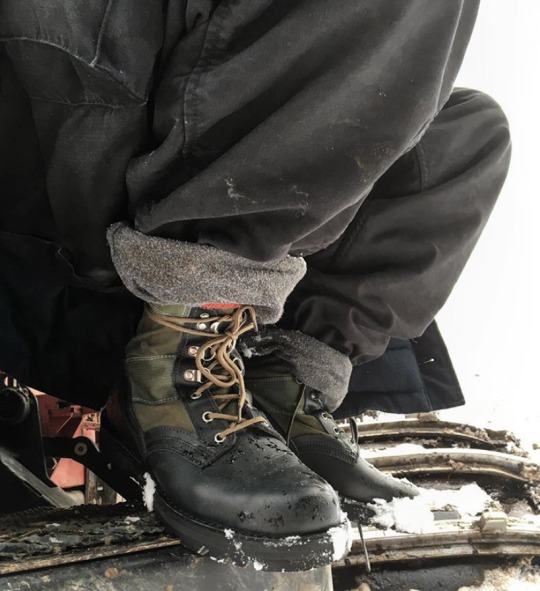

Some of my favorites are service boots, a style worn by American servicemen during WWII. They’re to workwear what boat shoes are to prep. Vibergs are among the most popular today, largely because of how well they straddle the line between streetwear and repro workwear. You can find them at Mr. Porter, Lost & Found, No Man Walks Alone, and Division Road (the last two are sponsors on this site). Division Road is nice because they have a wide selection and tons of exclusive designs. They recently received an order of Vibergs made from Horween’s Dublin, a full-grain leather that has been treated to a higher percentage of oils and fats. Again, good for keeping rain water at bay.
Other great work boot manufacturers include Russell Moccasin, Red Wings, RRL, Thorogood, Wolverine, Chippewa, Oak Street Bootmakers, Blundstones, John Lofgren, and Yuketen.
Tyrolean Shoes. These were originally made for walking in the Tyrol area of the Alps, hence the name, but today they’re good if you like rustic clothes and slightly more offbeat takes on workwear. The style is defined by its grippy soles, Norwegian welts, and heavy-duty leather uppers that have been generously oiled with natural fats. That makes the leather a bit more water-resistant and pliable, perfect for the bellow tongues that are also designed to keep out water. The two-eyelet lacing system makes these an easy wet-weather shoe for when you don’t want to deal with boots. The style is a bit goofy looking, to be sure, but in a charming way. I like the ones from Heschung and Paraboot.
Hiking Boots. Classic and simple, these should appeal to anyone who likes Rugged Ivy – the more casual take on Ivy style. Hiking boots can be worn with parkas, jeans, and collegiate sweatshirts. Just stick to the more classic varieties. The heavily tech’d out versions can be an eyesore.
For an easy pick, start with Danner. Their Mountain Light model has been popular with style enthusiasts for years, although I also think the Crater Rim is worth consideration. You can also check out Fracap, Roa, Paraboot, Buttero, and Viberg. Alico is good for anyone on a budget. And on the opposite side of the price spectrum, Nigel Cabourn is coming out with a collaboration with Danner later this year.
Rubber Boots. For when the weather is frightful, Wellingtons will be your best protection. I like the ones from Le Chameau, Hunter, and Musto. I also can’t imagine a better option than LL Bean’s boots. They’re affordable, last forever, and go with everything from mac raincoats and tailored trousers, to more causal workwear pieces paired with jeans. You can also check out Moonstar’s All-Weather high-tops for a half-rubber, half-canvas sneaker option. Ebay has vintage rubber boots from Royal Insulair. And Nigel Cabourn once gave his spin on the classic duck boot. If they weren’t so dearly expensive, and LL Bean boots weren’t already so great, I would have bought a pair.
Finally, some rainy day photos below. Not everyone is wearing boots, but hopefully they all give you some style inspiration.

